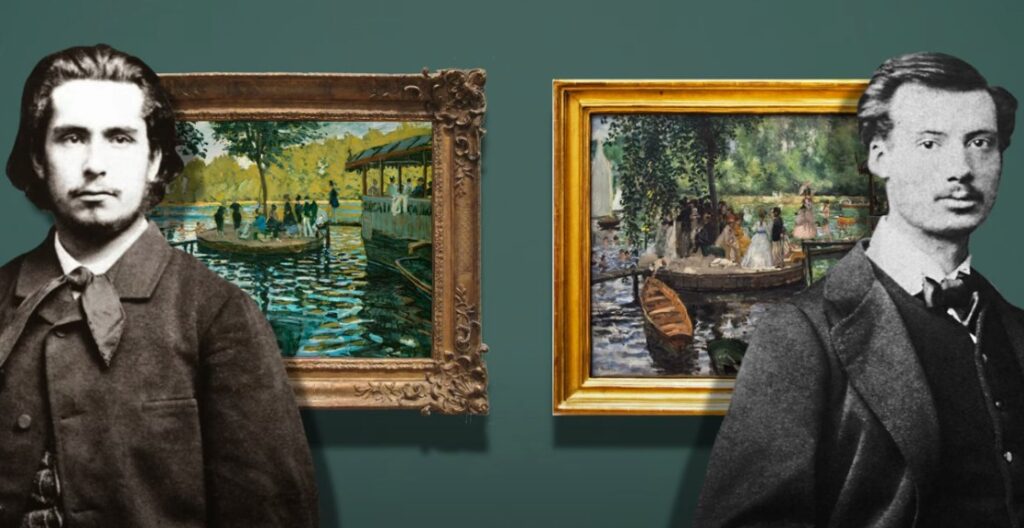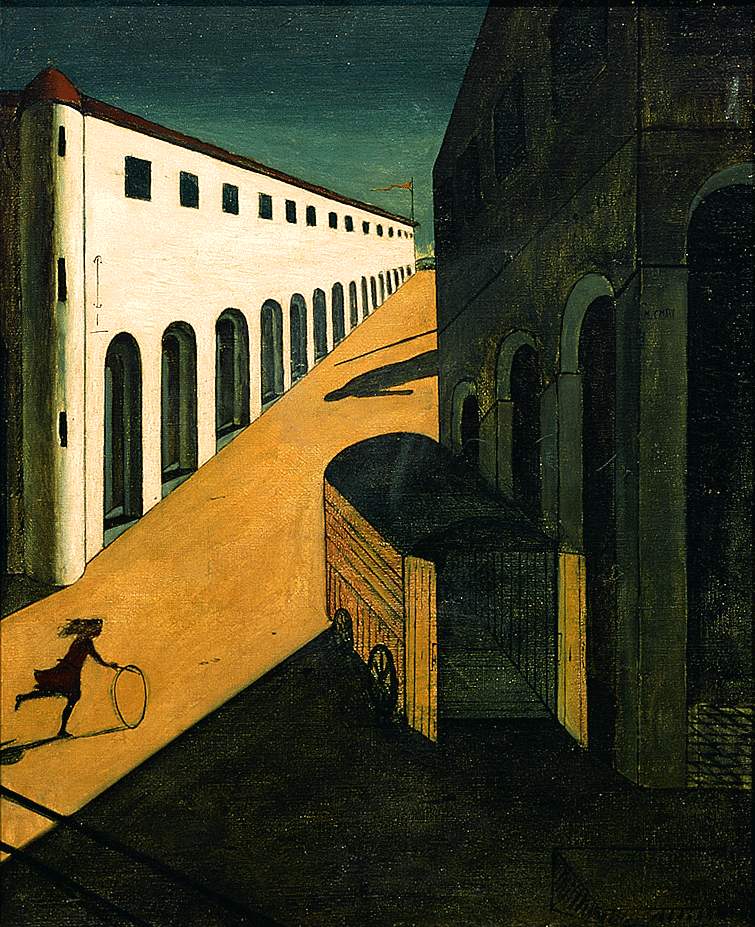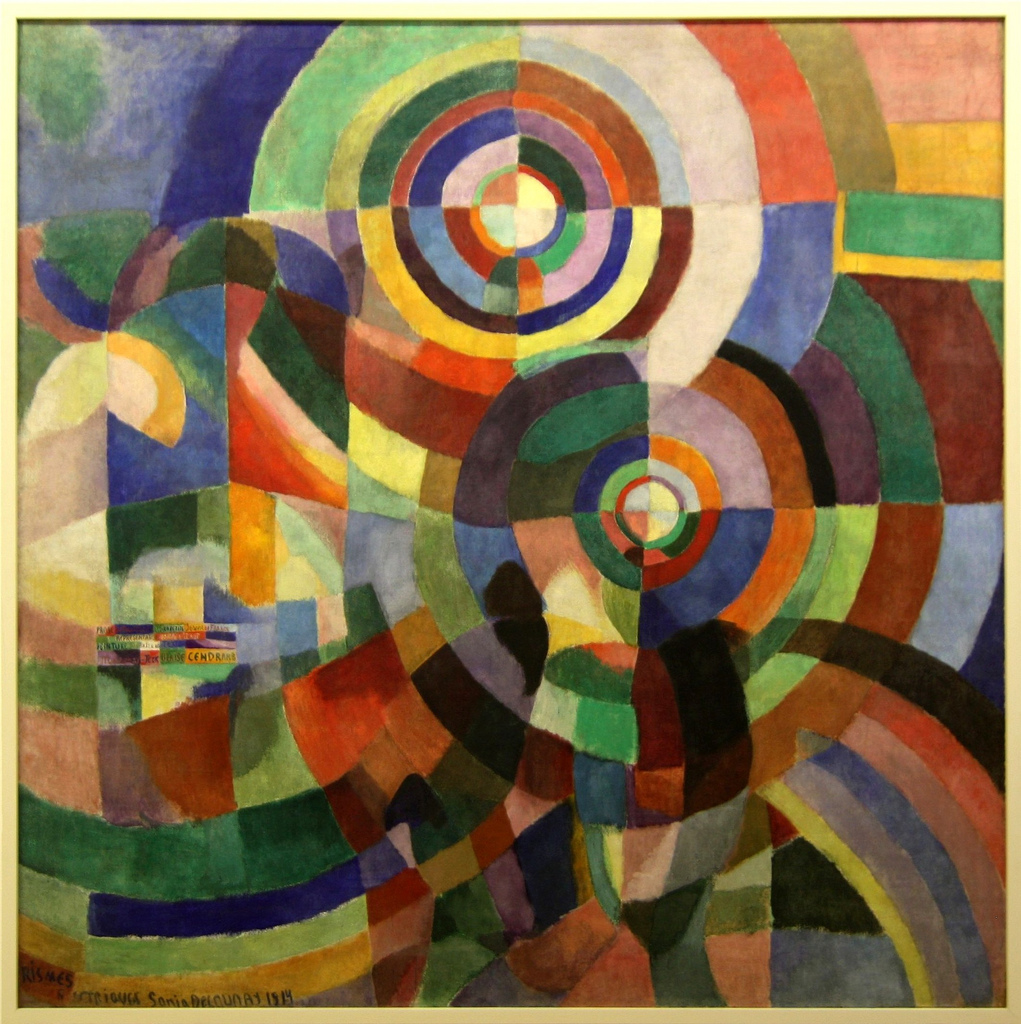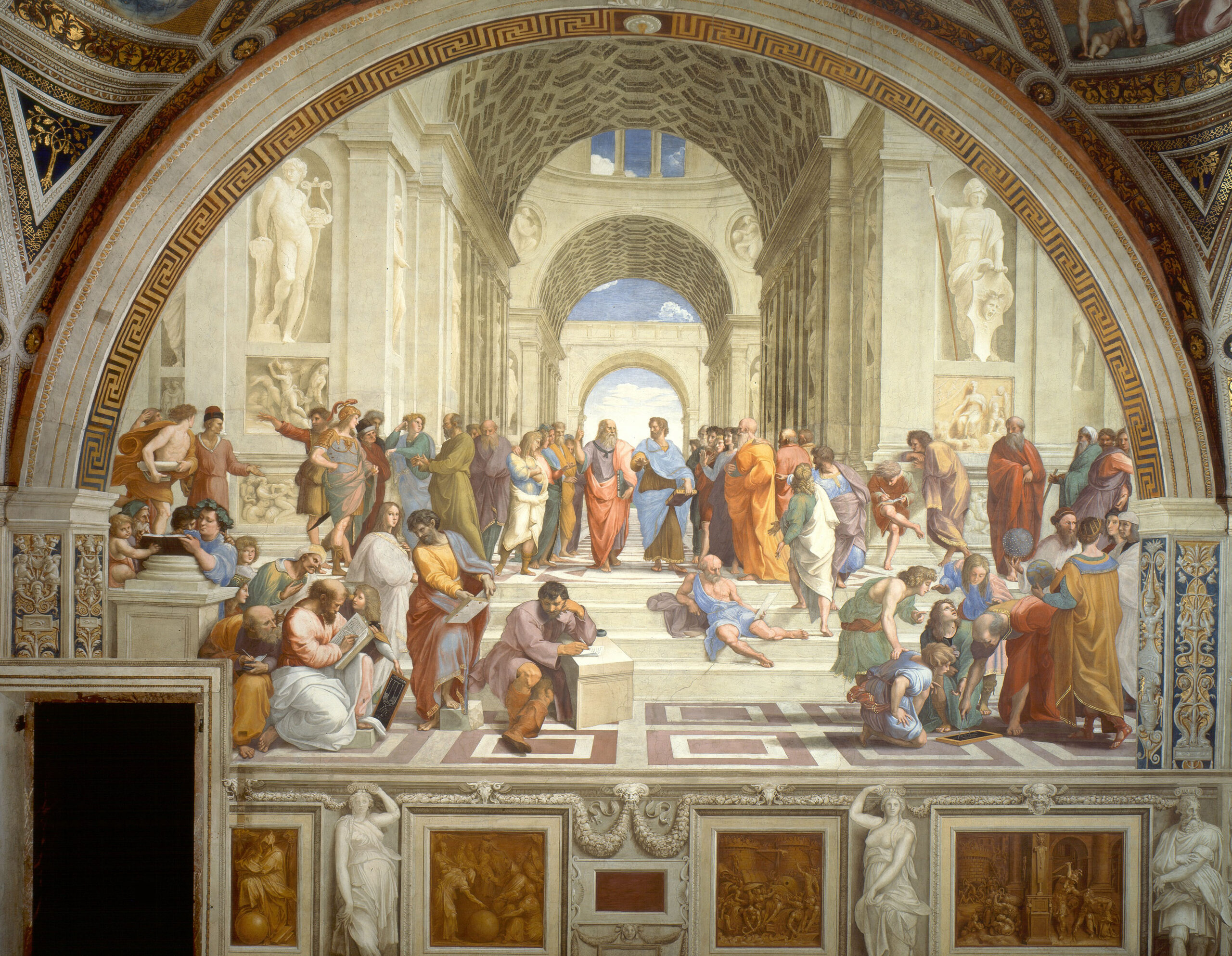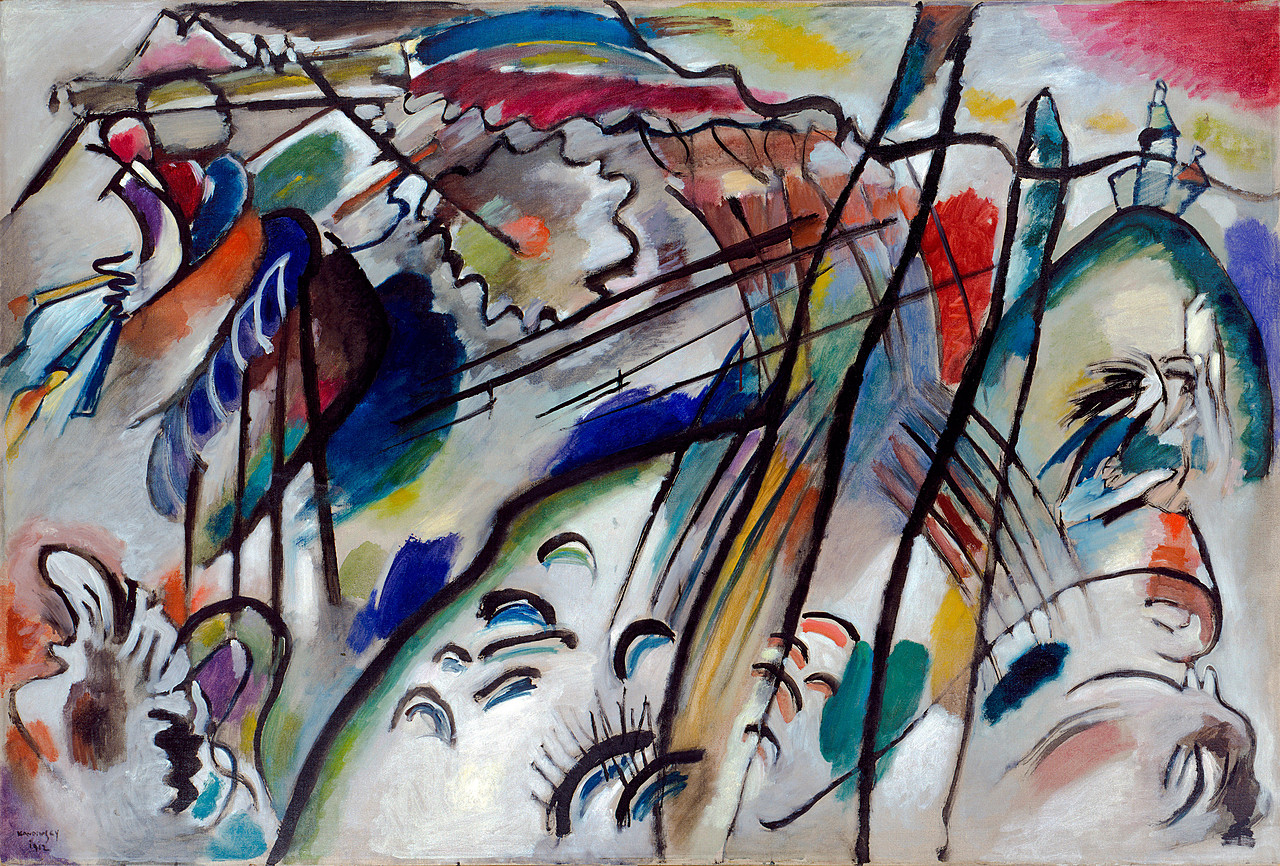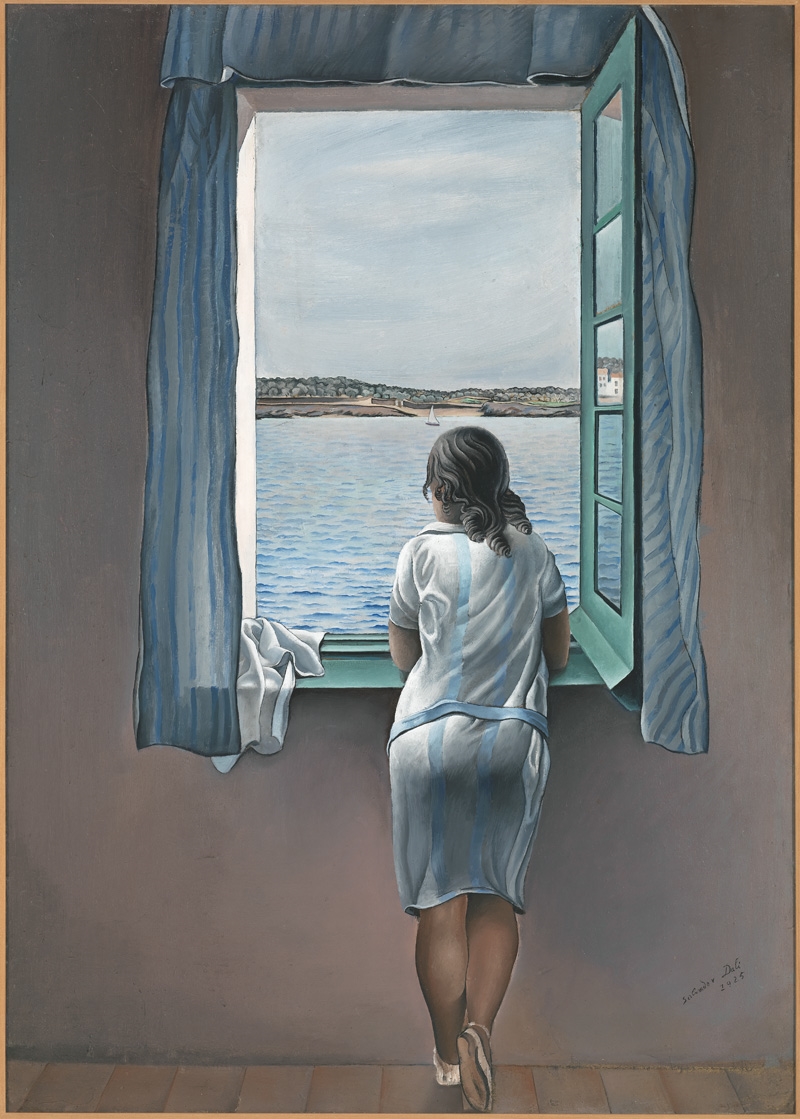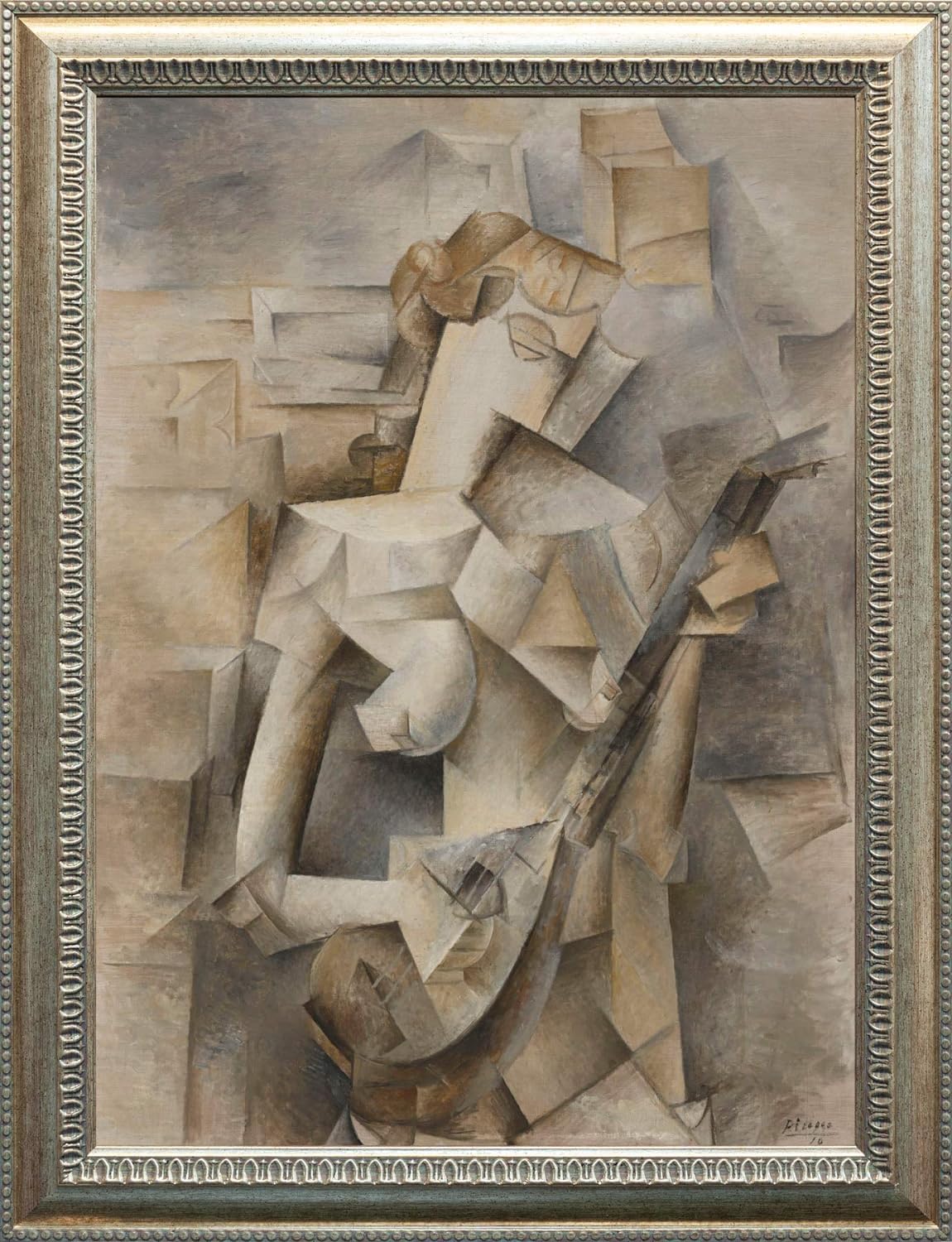A Pictorial Encounter at La Grenouillère
In the effervescent summer of 1869, Claude Monet and Pierre-Auguste Renoir, two giants of Impressionism, embarked on a unique collaboration at La Grenouillère. This charming corner on the banks of the Seine became the backdrop for a series of masterpieces that not only reflected the artists’ individual styles, but also marked a crucial milestone in the history of art.
Tabla de contenidos
- A Pictorial Encounter at La Grenouillère
- The Story behind the Grenouillère by Pierre-Auguste Renoir & Claude Monet
- Inspiration and scenery of La Grenouillère for artists
- Paintings by Claude Monet on La Grenouillère
- Paintings by Pierre-Auguste Renoir on La Grenouillère
- The same scenario, different perceptions and techniques
- A legacy of two artists in La Grenouillère
The Story behind the Grenouillère by Pierre-Auguste Renoir & Claude Monet
Monet and Renoir’s Daily Difficulties
In 1869, Claude Monet was facing severe difficulties with his family in Saint-Michel, a village near Bougival, west of Paris. His desire was to create a living painting, seeking to captivate and appeal to the masses and exhibitions of the time. In the midst of economic adversity, Monet strove to find a fresh and vibrant artistic expression that would resonate with the general public.
Both Monet and Renoir experienced a life marked by the uncertainty of everyday life. Monet would literally paint until he exhausted his resources of colour and then plunge into drawing, preparing himself for the next occasion when he could get some money from his friends to continue his work. On the other hand, Renoir had some support from his family.
Challenges of Pierre-Auguste Renoir
Pierre-Auguste Renoir was in a similar situation of poverty. It was during this time that both he and Monet collaborated in the creation of their works at La Grenouillère (The Frog Pond), a well-known meeting place on the banks of the River Seine, close to Bougival and accessible by train. This picturesque spot was a lively gathering place where people congregated to enjoy swimming, dancing, socialising and drinking.
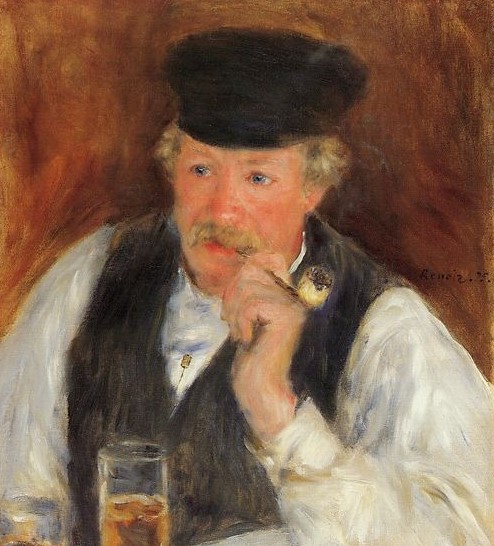
Fortunately, the owner of the restaurant in La Grenouillère, Fournaise Monsieur, accepted some of Renoir’s paintings as payment for food, providing him with valuable support in difficult times. Portrait of Fournaise Monsieur by Renoir
Inspiration and scenery of La Grenouillère for artists
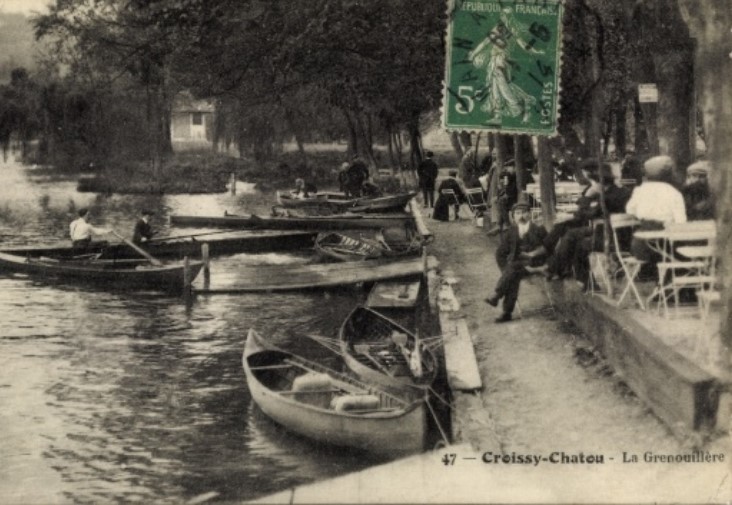
The name La Grenouillère is based on its double meaning, as it not only represents the French expression for «frog pond», but was also used colloquially to refer to women. As expressed by Renoir’s son in his father’s memoirs, these women were not exactly prostitutes, but rather a category of young single women, characteristic of the Parisian scene.
A corner of sophistication on the banks of the Seine
La Grenouillère’s bar restaurant, installed on a barge, stood as a fashionable enclave where the growing middle class could indulge in the novel pleasures of the Parisian suburbs. The tiny island adjacent to the restaurant, notable for the presence of a willow tree at its centre, was known as the ‘Pot de fleurs’ (flowerpot) or ‘the camembert’. With its access facilitated by wooden planks, it became a meeting place where people congregated, engaging in lively conversation before heading to the bar at La Grenouillère.
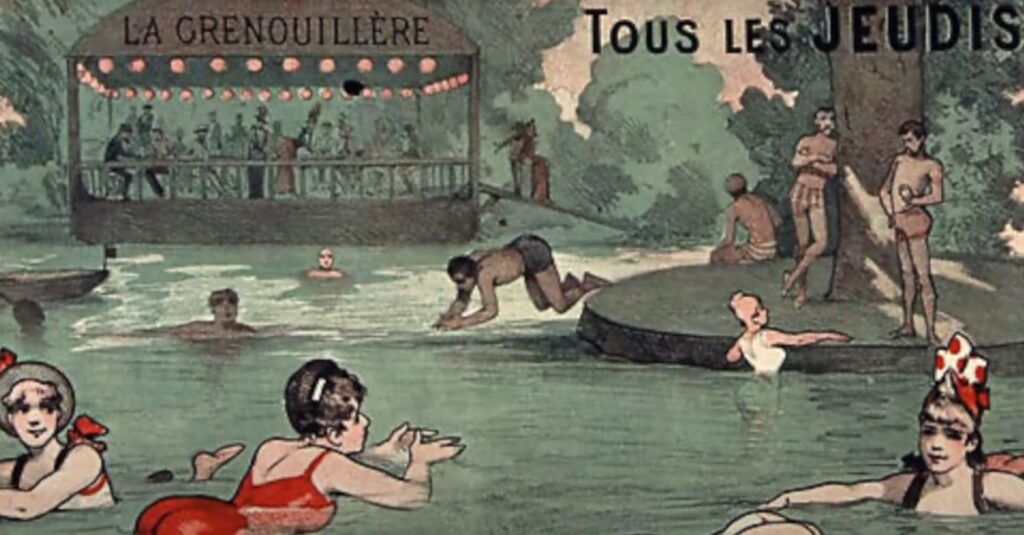
La Grenouillère, a leisure centre for the emerging Parisian middle class, offered a range of experiences with its spa, nautical centre and floating café. Monet and Renoir, facing financial difficulties, immersed themselves in the daily life of this picturesque place. The laughter of the bathers, the boat rides and the animated chatter among the visitors became the raw material for their canvases.
The Social Impact of La Grenouillère at that time
La Grenouillère was not only an artistic space, but also a reflection of the emerging society of the time. From the rise of the middle class to the peculiar social dynamics of the place, Monet and Renoir immortalised more than a landscape: they captured an era.
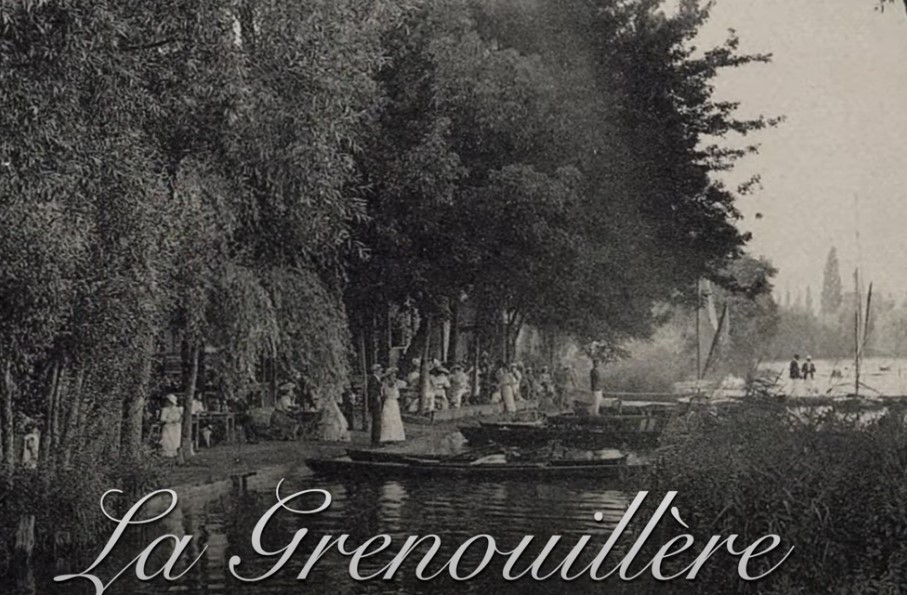
Paintings by Claude Monet on La Grenouillère
Bain à la Grenouillère
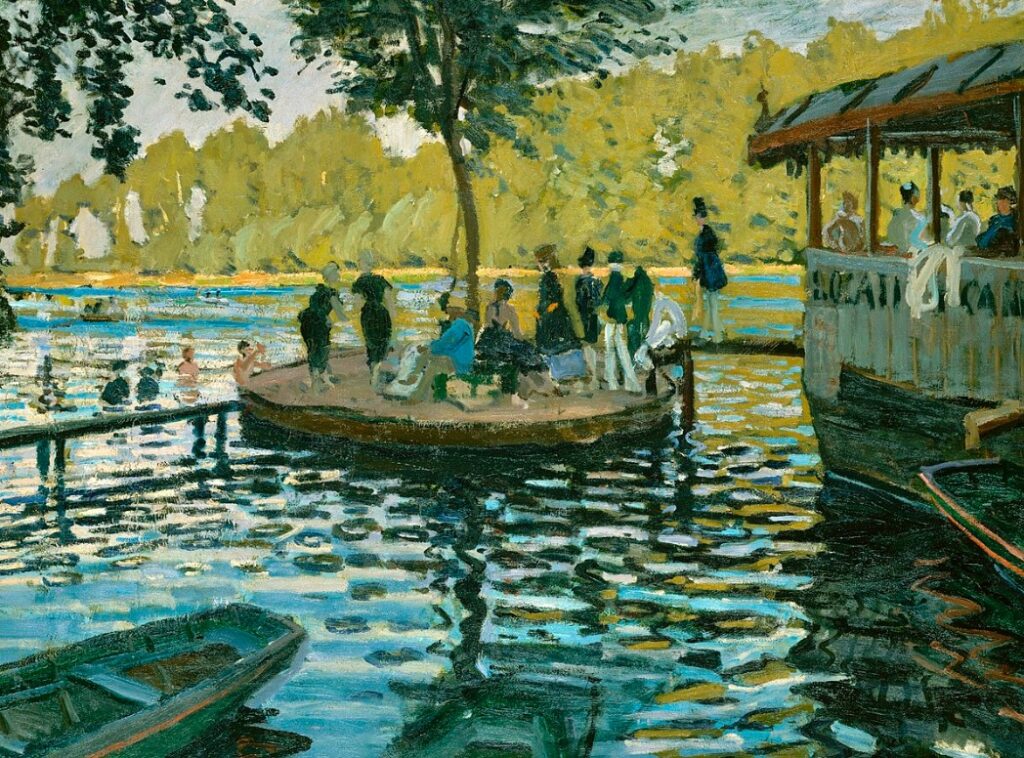
This 1869 painting by the French Impressionist Claude Monet (Oil on canvas, 74.6 cm x 99.7 cm). It depicts the «Isle des Pots», also known as Camembert, and the walkway to La Grenouillère, a floating restaurant and boat rental on the Seine at Croissy-sur-Seine .
Artist: Claude Monet
Year: 1869
Location: Metropolitan Museum of Art, New York City
Medium: oil paint, canvas
Dimensions: 74.6 cm (29.4 in) × 99.7 cm (39.3 in)
You may find this article interesting: Impression Sunrise by Claude Monet
Bathers at La Grenouillère
Monet made several oil sketches at the spa, including this painting, in preparation for an extensive painting of the place which he intended to exhibit in 1870. Quickly executed and technically rough, they have a sincerity and immediacy that would be difficult to achieve in the studio. Monet captured what he saw without attempting to order the scene.
Title: Bathers at La Grenouillère
Artist: Claude Monet
Date: 1869
Medium: Oil on canvas
Dimensions: 73 × 92 cm
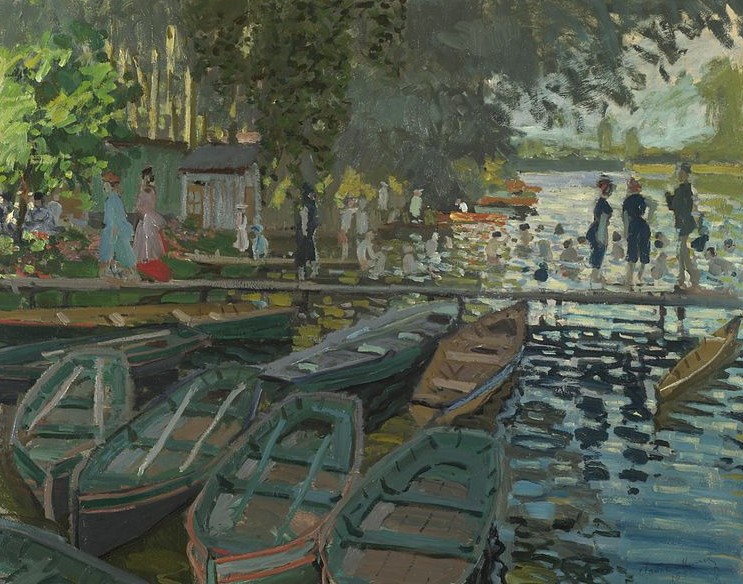
Paintings by Pierre-Auguste Renoir on La Grenouillère
La Grenouillère
Pierre-Auguste Renoir’s oil on canvas, dated 1869 and now in the National Museum in Stockholm, depicts the charming «Camembert», a small island with a single tree, connected by footbridges to both the Grenouillère and the refined floating restaurant and boat rental service.
Painted at the dawn of Impressionism, this work coincides in time with the creation of Claude Monet’s «Bain à la Grenouillère», where both artists, friends and colleagues with financial constraints, shared the experience of capturing the same scene, sitting side by side in this picturesque setting.
Artist: Pierre-Auguste Renoir
Year: 1869
Location: Nationalmuseum, Stockholm
Medium: Oil on canvas
Dimensions: 66 cm × 81 cm (26 in × 32 in)
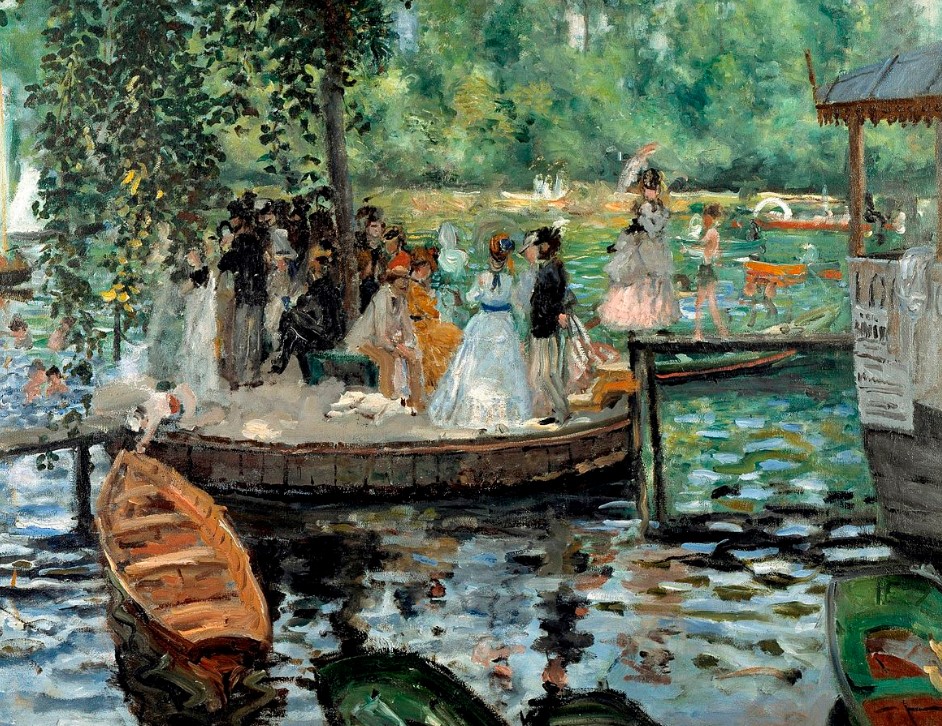
Complementary paintings by Renoir on La Grenouillère
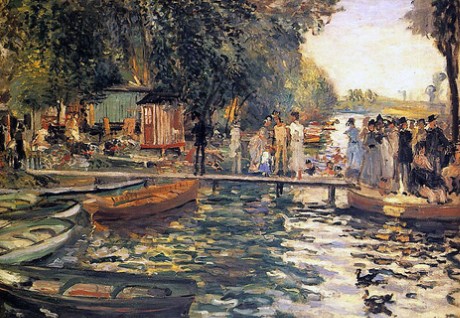
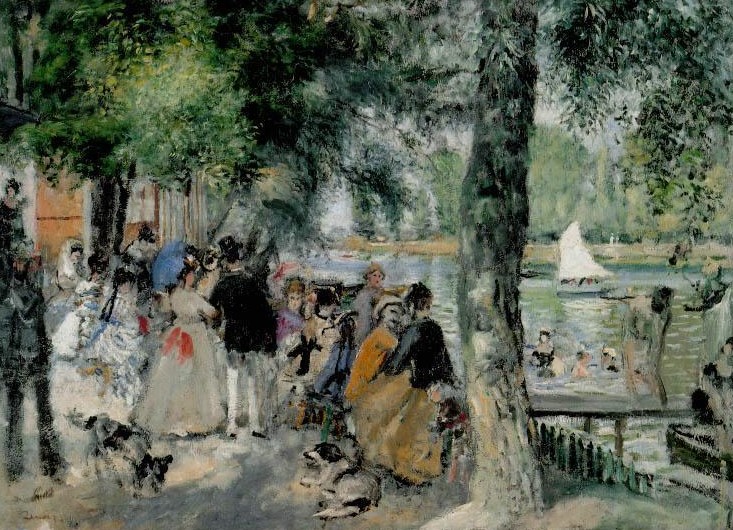
Artist: Pierre Auguste Renoir
Undated – Oil on canvas
The same scenario, different perceptions and techniques
Both artists portrayed scenes that included boats, swimmers and couples strolling along the water’s edge or crossing walkways. Through the rapid execution of numerous renderings of the same scene, they succeeded in capturing the subtle changes in light and atmosphere throughout the day. The surviving works from that summer clearly indicate that they usually painted side by side, highlighting the collaboration and simultaneity in their creative approach.
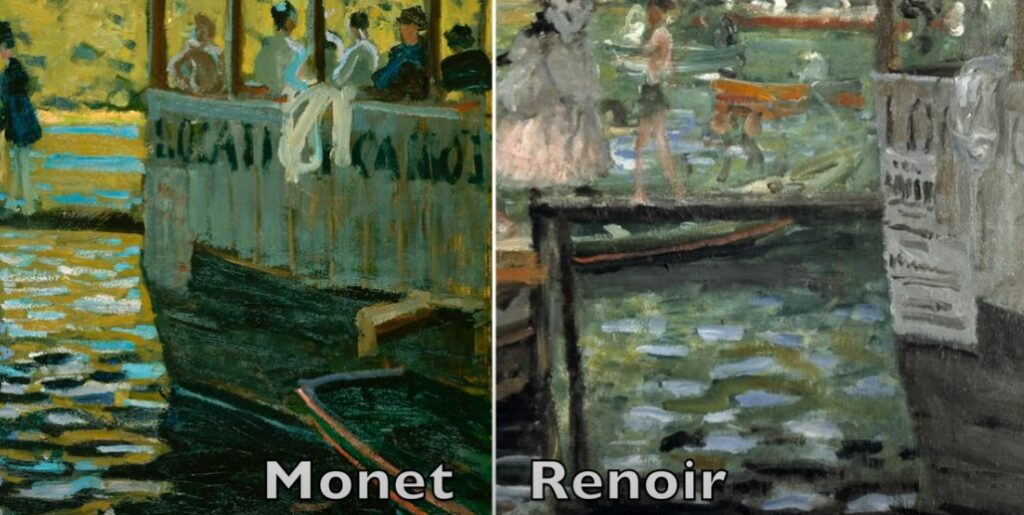
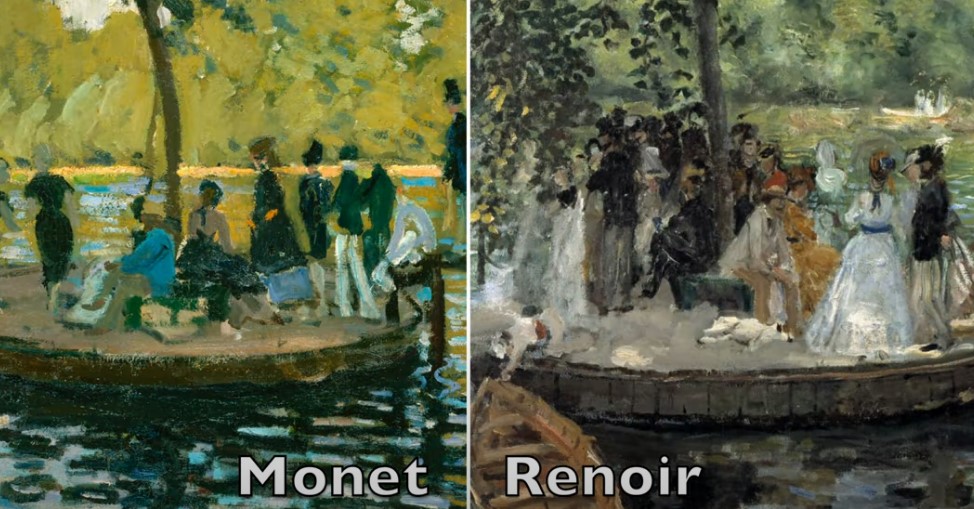
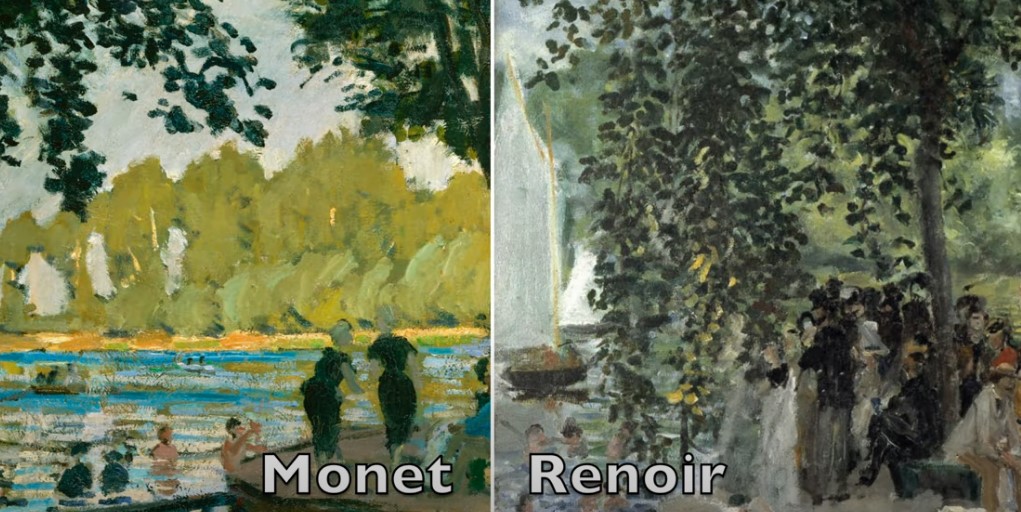
Under the shadow of the «Flowerpot Island» or «Camembert» footbridge leading to La Grenouillère, Monet and Renoir brought to life their unique visions of the river landscape. Despite the similarities in the scene, their divergent artistic approaches stand out, revealing Monet’s boldness in colour and Renoir’s meticulous attention to detail. While Monet immersed himself in the vibration of the water and the reflections of the sky, Renoir explored the woodwork of the boats and the minute details of the scene.
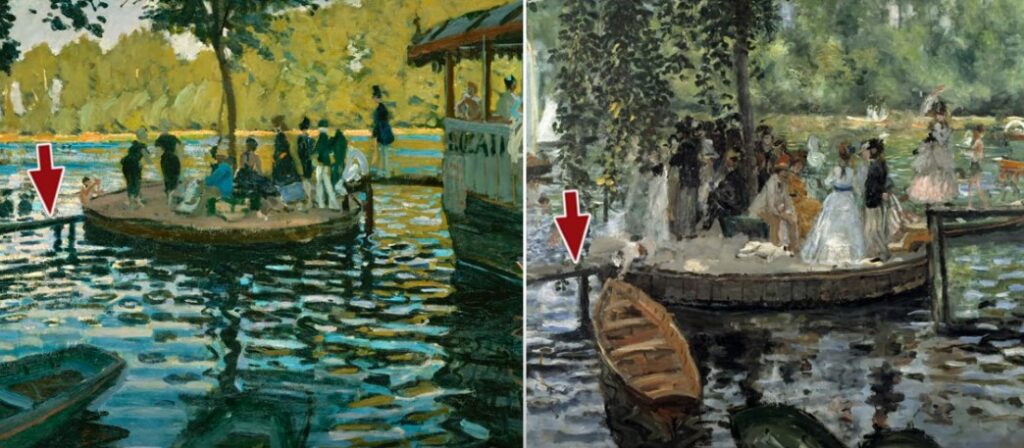
Bold colour statement in Bain à la grenouillère – Claude Monet
Monet’s artistic passion is rooted in the exploration of colour, light and form. This is clearly evident in his work through the visual vibration of water, the reflection of the sky. Each element is a bold statement of the expressiveness of colour, where the vibrant palette and careful manipulation of light highlight his distinctive focus on visual perception and the capture of unique atmosphere.
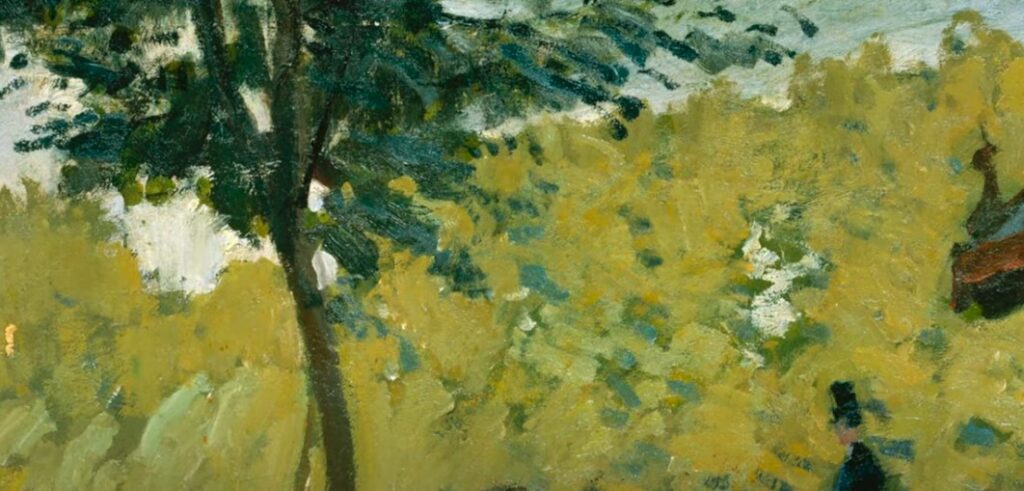
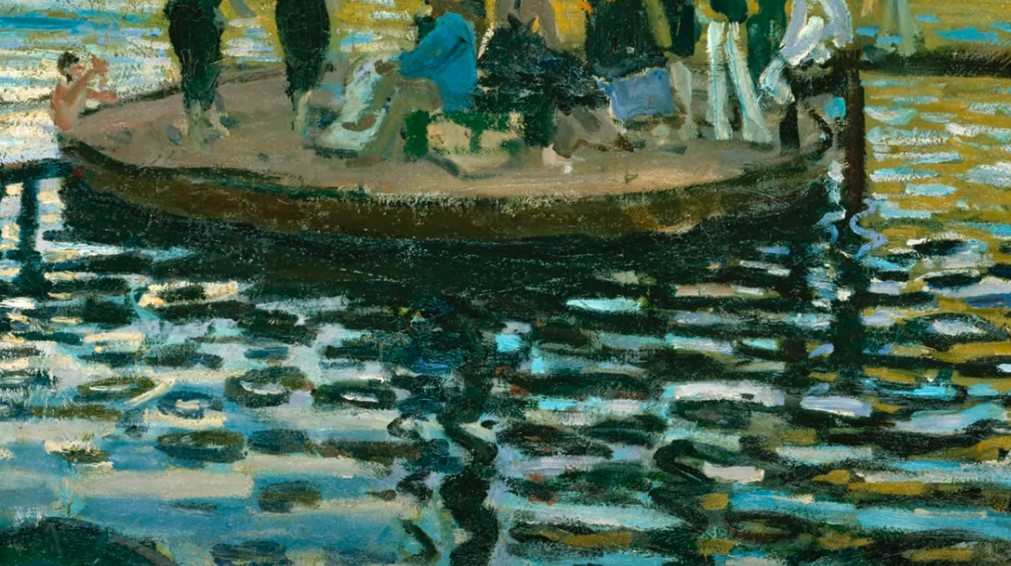
Monet was immersed in experimenting with novel approaches to depicting water, using broad brushstrokes in shades of brown, white and blue. His predilection for approaching forms with bold strokes, the juxtaposition of patches of colour and the suppression of superfluous detail were evidence of his search for a freer, more simplified expression in visual representation.
Attention to detail in La Grenouillère by Pierre-Auguste Renoir
Renoir excels in this work in his meticulous attention to detail. From the meticulousness in the depiction of the woodwork of the boats to the individual leaves of the tree in the foreground, the details of the clothing and even the typography on the signs on the balusters of the café, each element reveals the artist’s care to capture the essence of the scene. In addition, it can be seen that the colour palette used by Renoir tends towards more pastel tones, contributing to a dreamlike atmosphere and thus sharing his dreams through artistic expression.
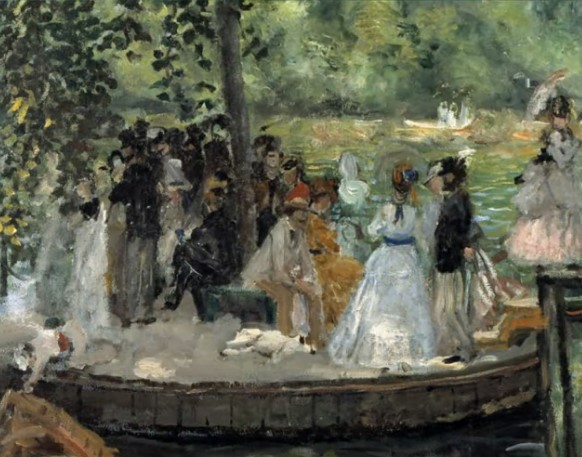
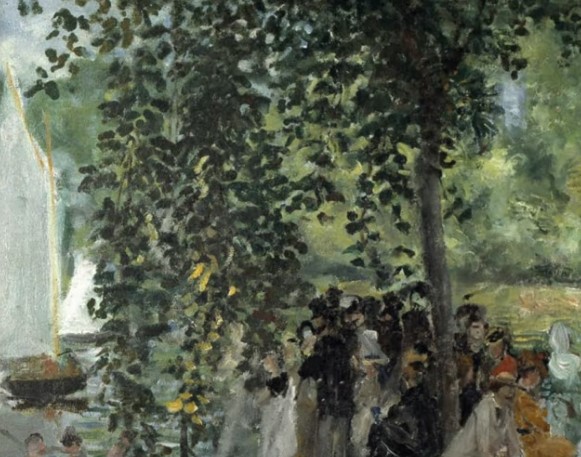
Renoir immortalised groups of people on the small island known as the «camembert», experimenting with small patches or «taches» (French for «spots»), which consisted of diffuse, undulating strokes placed side by side, generating subtle variations in colour.
Bright white impasto, a thick paint directly from the tube, on the surface of the water, suggesting reflections of intense light and capturing the dynamic movement of the water caused by bathers and boats.
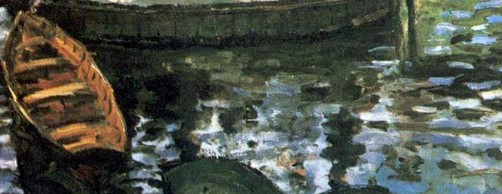
A legacy of two artists in La Grenouillère
Experimenting with plein air painting techniques, Monet and Renoir developed innovative methods for capturing the constantly changing light and atmosphere. Monet’s vibrant palette, focused on colour and form, contrasts with Renoir’s meticulous attention to detail and softer palette. This shared summer not only marked a turning point in their careers, but also influenced the evolution of Impressionism as an artistic movement.
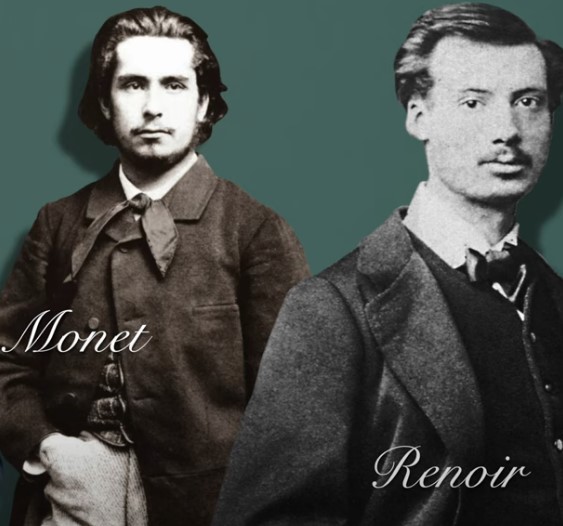
Both artists found more than a temporary refuge at La Grenouillère. The differences in their works reveal the diversity within Impressionism, while the collaboration left a lasting legacy. The influence of this summer endures in the appreciation of Impressionist art, marking an era of change and experimentation that still reverberates in the history of art.

